Rebekka Kiesewetter investigates the current buzz around design from Eastern Europe
Looking East
-
Ornament and Crime (Lenin) by Maxim Velcovský for QUBUS Design Studio
© Gabriel Urbanek
-
Urn by Agata Karolina Niemkiewicz
Courtesy of the designer
-
Ubuntu Vases by Agata Karolina Niemkiewicz
Courtesy of the designer
-
Pétrifications by Krzysztof J. Lukasik
© Marie-Pierre Cravedi
-
Cityscapes Rug by ALLT Studio
Courtesy of the designer
-
Silo by ALLT Studio
Courtesy of the designer
-
Balloons by Lucie Koldova
© Dan Yeffet Brokis
-
Easy Chair by Bashko Trybek
Courtesy of the designer
-
Bristle & Horn by Matylda Krzykowski for Passionswege Vienna
Courtesy of the designer
-
Cactus by Tomas Kral
Courtesy of the designer
-
Hadovka lamp by Michaela Tomiskova
© K. Hrabetova
-
Homework by Tomas Kral
Courtesy of the designer
-
Log Seat by Klara Sumowa
Courtesy of the designer
-
Made of Coal by Bashko Trybek
Courtesy of the designer
-
Eclipse Wall Lamp by Maria Jeglinska
Courtesy of the designer
-
Teapot by Maria Jeglinska
Courtesy of the designer
-
Daddy Would Be Proud Wooden Scissors by Matylda Krzykowski
Courtesy of the designer
-
Furniture by RIJADA
Courtesy of the designer
-
Fabric series by Mara Skujeniece
Courtesy of the designer
-
Stonki by Ola Mirecka
Courtesy of the designer
-
WRAP Tables by Lucie Koldova
Courtesy of the designer
-
WWW Shelves by Viktor Matic
Courtesy of the designer
It might seem outmoded, in the 21st century, to approach contemporary design through the lens of geography. After all, the factors that define the field today—global digital networks, multinational collaborations, and worldwide media coverage—for the most part eradicate spatial limitations. But for designers from far-flung regions, beyond the main centers of design activity—like London, Milan, Tokyo, or New York—national identity can be a wellspring of inspiration, differentiation, and even empowerment. Whether mining local history, tapping local craft traditions, or banding together to create new institutions and exhibitions with international appeal, a number of designers and design supporters in Eastern Europe, particularly Poland, the Czech Republic, and Slovakia, are creating a distinct collective identity that has attracted the curiosity of outsiders.
Two years ago, The School of Form, a new four-year college of design, opened in Poznan, Poland. The international design community might have overlooked this institutional launch if it weren’t for Dutch-born, Paris-based Li Edelkoort, who joined the effort in a vision-defining leadership role under the title of Mentor. Edelkoort’s tremendous achievements overseeing the Design Academy Eindhoven between 1999 and 2009—along with the credit she received for launching the careers of stellar young designers like Maarten Baas, Nacho Carbonell, and several others—has generated great anticipation. Design lovers around the world are eagerly awaiting the results of The School of Form’s first graduating class in 2015. The collateral consequence of this buzz has been greater international interest in the diverse design work already coming out of the region.
“Now is the time for us to have our 15 minutes,” says Agnieszka Jacobson-Cielecka, the School of Form’s Head of Design and a long-time design curator, critic, and publicist. For Jacobson-Cielecka, the former Eastern Bloc countries are poised to bring a fresh perspective to design: “A little more than 20 years after the collapse of the Soviet Union, we are still on an upward trajectory. There are always greater goals to strive for, which makes us rather forward-thinking, without any affectation. We are neither fed up nor bored yet.”
Like many creatives in the region, Jacobson-Cielecka credits the old culture of austerity with the success that Eastern European designers are finding now, as the world struggles to recover from ongoing financial crises. Scarcity of jobs, funds, spaces, and support are familiar conditions to many—if not for the very young then certainly for their parents—and designers are quick to maximize the resources at hand. “The scarcity of material means under the communist regime led to a widespread aptitude for improvisation, a tendency to invent alternatives when conventional solutions are not available,” explains Jacobson-Cielecka. “I would say we are better at seeing the potential in the seemingly useless and reworking mundane materials until value is created.”
Regional craft traditions offer another rich resource for designers in Eastern Europe, especially since access to high technology remains relatively scarce. Adam Štech, a Czech design and architecture editor, curator, and founder of the Prague-based creative group OKOLO, believes craft provides a touchstone to the past as well as the future. “Glass manufacturing has a glorious history in the Czech Republic,” he says, “and traditional artisanal materials have become a platform for experimentation. Czech design has long been under the influence of modernism and the neo-functionalist movement of the 1990s and 2000s, with rather somber results. But now we are seeing exciting new craft approaches that are more conceptually-driven, ironic, even tongue-in-cheek.”
Although Jacobson-Cielecka is reluctant to define Polish and Eastern European design too narrowly, she believes the intermingling of handcrafted techniques with contemporary aesthetics is ubiquitous: “I see so many designers investigating the traditional arts that their regions are known for, and then finding ways to reinvent these traditions with simple or easily accessible materials. Often the outcome is self-deprecating and clever, with a certain craftiness involved.”
While contemporary design from Eastern Europe is largely fuelled by self-reflection, the increased attention has resulted mostly from targeted efforts to engage a wider audience. Eastern European designers are participating more and more in international design events, like the Milan Furniture Fair, London Design Festival, and DMY Berlin—where Poland was the “Guest Country” last June. Jacobson-Cielecka, Štech, and others curators from the region collaborated to organize the widely acclaimed exhibition Common Roots: Design Map of Central Europe, presented earlier this year at Design Museum Holon in Israel. What’s more, local design fairs and festivals have been popping up all over: in Lodz, Gdynia, Warsaw, Wroclaw, Poland, as well as in neighboring cities, such as Prague, Sofia, and Belgrade. The sheer volume of activities over the last few years has secured a massive amount of press coverage for the region.
Some Eastern European designers find themselves wrestling with the tension between two competing impulses: the desire to join the international conversation and the urge to hold on to their unique roots. Agata Karolina Niemkiewicz, a Polish-South African designer based in Rotterdam explains: “It is not often the case that you are given the opportunity to watch a country and its people completely reinvent themselves. Both South Africa and Poland have been playing ‘catch up’ lately, and this act intrinsically leads to pressing questions: How do you make yourself stand out while searching for a place in the wider world? How do you pursue progress when you’ve been kept in the dark for so long? What kind of models do you choose to emulate? Do you look to foreign competition or try to reinvent your own past? Or something brand new?”
Another question is where to live. Is it better to stay close to home and draw on distinct local flavors, or move abroad where the support systems are more fully developed? For some, their heritage has nothing to with their choices. Polish designers Ola Mirecka and Krzysztof J. Lukasik live in London and Lyon respectively; Czech designer Lucie Koldova also lives in Lyon; Slovak designer Tomáš Král lives in Lausanne; Latvian designer Mara Skujeniece lives in Amsterdam; and Croatian designer Viktor Matic lives in Italy. Many concur with Lukasik, who says: “I am Polish, and I am a designer. But I do not feel like a Polish designer. I completed my studies in French and English, and I live in France because I have always wanted to live here. Even though I am excited about my first collaboration with a Polish company, I’m mainly working with international brands.”
For a long time, the most ambitious Eastern European designers chose to study and practice in Western Europe—but this is changing. The designer Maria Jeglinska, was born in France to a Polish family; she attended ECAL in Lausanne and went on to work in Paris, Munich, and London. In 2011, however, she moved to Warsaw. Tomek Rygalik, born in Poland, worked in New York before enrolling at London’s Royal College of Art; in 2009, he moved his practice to Warsaw. Even Oskar Zieta, perhaps the most internationally established contemporary Polish designer, recently relocated his studio from Zurich to Wroclaw.
Jeglinska thinks the time is right to be in Poland: “For people of my generation who had the chance to work and study abroad, we see so many reasons to move back home. We have the opportunity to build something important from the ground up. And, of course, it is still relatively cheap to manufacture, while remaining close to the big markets in Europe. Many don’t know that Poland is the world’s fourth largest furniture producing country. And new companies are developing all the time. I believe my generation can harness all this potential, and I want to be here to make it happen.”
Others choose to build up their home countries from afar by acting as ambassadors and advocates. Matylda Krzykowski, a designer, curator, and author from Poland, now lives a more or less nomadic life due to her various international projects. She says, “I would love to be on the ground at the epicenter of Poland’s current creative renaissance, but at the moment I can do more for the young generation of talents by promoting them abroad.”
There seems to be consensus around the fact that a lot needs to happen before Eastern Europe is established as a major design center. Jeglinska explains, “There is much productive capacity, but manufacturers still lack strong visions, and the exchange between designers and industry does not work well yet. Both sides are somehow unprepared. Also, the local consumer base cannot support our goals, since average wages are extremely low. Besides, Polish society still does not entirely understand the role of design in everyday life—design is still seen as something expensive and weird, not as a worthwhile investment.”
Krzykowski adds that Polish designers suffer from what she calls a kind of low self-esteem: “Eastern Europeans tend to have complexes about their Western neighbors; they need affirmation from abroad in order to believe in their own strengths and potential.” And Štěch notes a lack of sophisticated marketing skills: “Young Czech designers seem to have a problem with good self-presentation. They are good, but not yet competitive in an international context.”
However, there are a rising number of designers, like Jeglinska, who are coping quite well on their native ground, even if it might still be a bit shaky. Gdansk-born Bashko Trybek, who studied and worked in his home city and now runs his design studio in Warsaw, has been increasingly in demand on a national and international level. Similarly, works by practitioners like the Latvian studio Rijada; the Slovak duo Allt; Georgia-based Rooms; and Czechs Vyrobeno Lesem, Klára Šumová, and Michaela Tomišková and Jakub Jand’ourek of DECHEM are presented in galleries and shops around the world. These success stories don’t make up for the discrepancy between the merit of the region’s designers and the degree to which they have been recognized, but for those of us watching from the outside, there is a palpable energy that promises a great deal more in the near future.
-
Text by
-
Rebekka Kiesewetter
Rebekka is a Zurich-based, self-proclaimed design nerd who supports the field in a variety of ways: writing articles, curating shows, and organizing events. She’s also a member of the Depot Basel initiative dedicated to promoting emerging talent.
-
Designbegeisterte hier entlang
Eye of the Light Tischlampe von Malgorzata Mozolewska
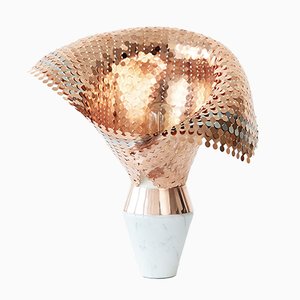
Skep Tall Vase von Atelier KAS

Skep Sphere Vase von Atelier KAS

Skep Butter Holder von Atelier KAS
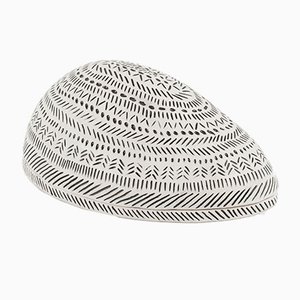
Naturbelassener Lana Chair von Photoliu

Bandaska Light (Tall) von DECHEM

Bandaska Light (Medium) von DECHEM

Limettenfarbener Lana Chair von Photoliu
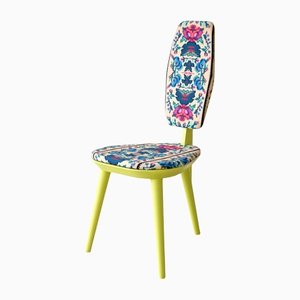
Grüngelber Chubby Clubsessel von Designers Guild & Photoliu
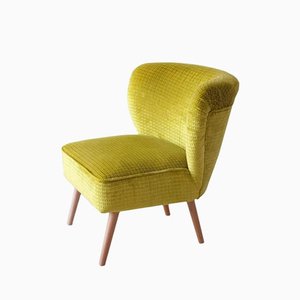
Lila Chubby Clubsessel von Designers Guild & Photoliu

Weißer Stuhl aus Buchenholz mit Designers Guild Bezug von Photolui
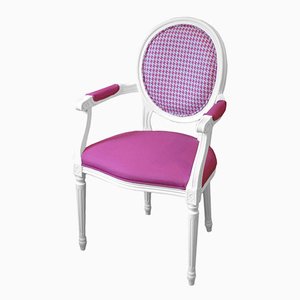
Grauer Stuhl mit Armlehnen & Designers Guild Bezug von Photoliu

Stuhl aus Buchenholz mit tropischem Sanderson Stoff von Photoliu

Weißer Neat Stuhl mit Armlehnen & Designers Guild Stoffbezug von Photoliu

Korallenroter Stuhl mit Dedar Hahnentritt Stoff von Photoliu

Bandaska Light (Big) von DECHEM
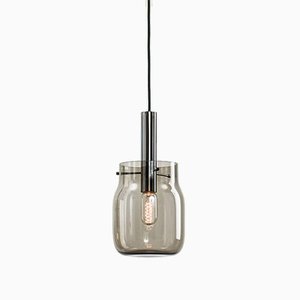























 Li Edelkoort
Courtesy of The School of Form, Poland
Li Edelkoort
Courtesy of The School of Form, Poland
 Rocking Bully, Rolling Bully by Jan Capek (Common Roots exhibition)
Courtesy of Design Museum Holon
Rocking Bully, Rolling Bully by Jan Capek (Common Roots exhibition)
Courtesy of Design Museum Holon
